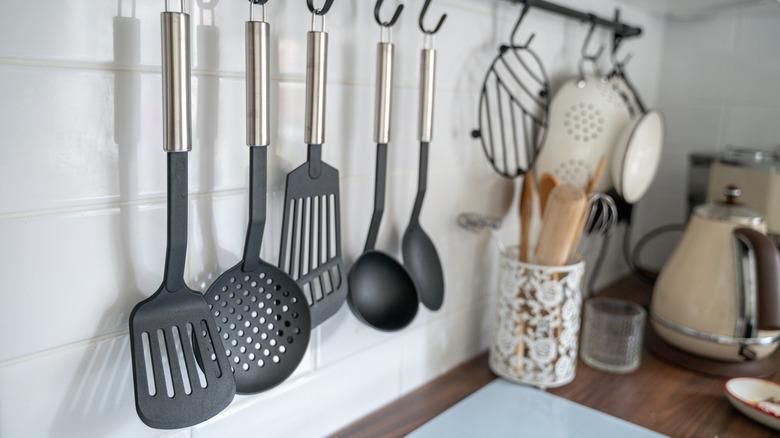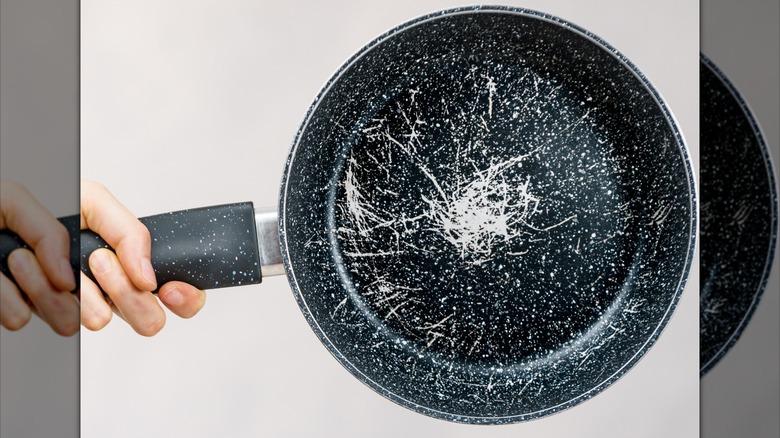Plastic Kitchen Essentials You Should Throw Out (And Non-Toxic Replacements To Use)
Plastic is pervasive and omnipresent. It has made its way into almost every aspect of our daily lives, and with rising concerns regarding the effects of microplastics on health, the biological effects of macroplastics, and everything that falls in between, many people are looking for ways to cut down on plastic waste at home. In reality, it is pretty much impossible to completely cut out your plastic consumption, not to mention impractical. But there are some easy swaps that you can make that can benefit both your own health and the health of the planet. One of the most effective areas to do this in is your kitchen.
A great majority of kitchen items have the potential to contain plastic. Whether it is utensils, storage, sponges, soap bottles, trash bags, cutting boards — the list goes on. But if you want to make a difference in your home, there are a couple essentials that are particularly easy to swap out — and might even work better and cost you less than your current plastic-ridden alternative. As you clean up your home by throwing out toxic household items, it's best to at least attempt to dispose of them in an ethical way. Recycle anything that you know can be recycled, and if you are unsure, contact your local waste and recycling center for advice on how to proceed. Here are the items you can get rid of and what you should replace them with.
What to replace and the best thing to replace it with
One of the worst offenders is plastic storage containers. Whether you have purchased food storage containers that are intended to be reusable, or you have a collection of pint and quart containers you have squirreled away from various takeout meals, neither is totally safe, but it's the do-good re-users who really get the short end of the stick here. The question with plastic takeout containers is not if they will release microplastics, but how many they will release. A study published in the Journal of Hazardous Materials found that every takeout container released some degree of microplastics, and the percentage only increased when reheated. There are a couple of alternatives to consider here, but your best bet is glass. Not only is it dishwasher safe, stain-resistant, and non-toxic, but you can throw it in the microwave (so long as there are no metal elements) if you want to save yourself a dish to wash later.
Another big culprit is the non-stick pan. While most people know that as soon as your non-stick pan shows scratches, it's time to move on, you may not know that even before there is visible damage to the surface, it may be leeching microplastics from the Teflon coating. Overheating nonstick materials can result in the release of PFOAs, also known as forever chemicals, into the air. This can then cause "Teflon flu" which is a combination of flu-like symptoms caused by inhaling these fumes. Luckily, there are quite a few alternative options out there. Ceramic, stainless steel, and cast iron pans are all great options that are both durable and non-toxic.

